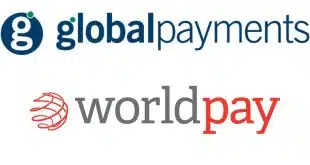Merchant acquirers are reporting more chargebacks now that the U.S. conversion to the EMV chip card standard is underway, but chargeback exposure varies widely by acquirer. And, so far at least, relatively few of the chargebacks are translating into actual financial losses.
That’s the word from First Annapolis Consulting Inc., which recently surveyed about 15 acquirers to learn about their chargeback experiences since Oct. 1, 2015. On that date, the payment card networks’ so-called liability shifts took effect, shifts that transferred financial responsibility for counterfeit card transactions to the party—merchant or card issuer—that didn’t support EMV in a disputed card sale. Until Oct. 1, issuers absorbed the vast majority of fraud losses.
First Annapolis, which does considerable work with acquirers, talked with processors of varying sizes, types—bank and non-bank provider—and types of merchants in their portfolios to get their opinions about how their chargeback experiences are changing, although it did not do formal data collection. Most acquirers reported that the types of chargebacks commonly associated with consumer fraud before the liability shifts—those involving sales of pharmaceuticals, jewelry, consumer electronics, and quasi-cash products such as prepaid card-top-offs, cash advances, and money orders—have continued, according to C. Marc Abbey, managing partner at First Annapolis.
But chargebacks have risen in some unexpected areas. “The acquirers that we talked to did report that there were merchant categories that surprised us—fast food, hotels, and small-ticket transactions, that you wouldn’t think the bad guys were trying to beat you on,” Abbey tells Digital Transactions News.
One acquirer reported that chargebacks were 3.8 times normal in December, all from non-EMV-enabled merchants. Another reported that EMV-related chargebacks were up 15%.
Not every acquirer reported a spike in chargebacks, however, and some had only minor increases. What’s more, most merchants that incurred chargebacks had funds to absorb the cost. If a merchant cannot or refuses to cover a chargeback, which typically is initiated by the issuer after the cardholder complains, the expense flows to the acquirer.
“There is elevated chargeback activity, I think that comes through pretty clearly through these discussions,” says Abbey. “But, so far, not elevated losses.”
The situation is subject to change because the U.S. EMV conversion officially started only five months ago, although some card issuers and acquirers had been preparing for it for about four years. Some 70% to 80% of active general-purpose credit cards and 25% to 35% of active general-purpose debit cards were chip-enabled by the end of 2015, according to estimates from Annapolis, Md.-based First Annapolis. In January 2016, Visa reported that only 750,000 merchant locations were EMV-enabled, which means the issuing side was much farther along in the conversion, seemingly leaving acquirers at higher risk of chargebacks.
Many acquirers haven’t decided yet if they’ll spend money to enhance their chargeback-mitigation programs, or simply ride out this exposure as the point-of-sale conversion continues, according to Abbey.
“How much to invest is a question,” he says. “When we get to the end-game and the point of sale is [EMV-] enabled, the exposure gets back to the issuing side…it’s a transient issue.”
EMV chargebacks are raising some interesting questions for possible future research, according to Abbey, but only if more more plumes of smoke arise that might suggest a fire. One is whether international card issuers are pushing harder than domestic ones on generating chargebacks. First Annapolis has yet to find evidence of that, Abbey says.
The second question is whether issuers are being predatory during the conversion, as Abbey reports some acquirers have complained, and pushed chargebacks that they might not have before the conversion. So far, the answer to that one is the same. “There is no credible evidence that these things are happening,” Abbey says.





